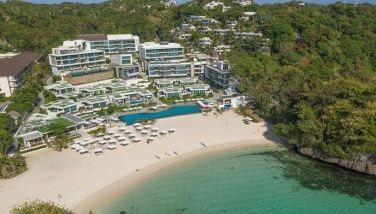BSP seen keeping rates on hold
MANILA, Philippines - New York-based JP Morgan Chase & Co., Barclays Bank, and AmBank Group of Malaysia see the Bangko Sentral ng Pilipinas (BSP) keeping interest rates steady this week amid the country’s benign inflation environment.
Sin Beng Ong, chief economist of JP Morgan Chase Bank, said the BSP is likely to keep interest rates steady during the policy-setting meeting of the BSP on Thursday as it focuses on the launching of the interest rate corridor (IRC) system in the second quarter of 2016.
“The benign inflation gives room for BSP to keep policy rates on hold. At present, the focus for the central bank will be on managing its introduction of the interest rate corridor in the second quarter of 2016,” Ong said.
The BSP expects some short-term volatility due to the migration of funds from the special deposit account (SDA) facility to higher yielding term auction deposit facility under the IRC system in the second quarter of next year.
The IRC would help improve the transmission of policy rate adjustments to relevant money market rates, and ultimately to key macroeconomic variables. It would strengthen the signaling effect of policy rates and provide a system that would allow easier price discovery particularly in the money markets.
Barclays Bank economist Rajul Bajoria said the BSP appears com fortable with its policy stance even with low inflation and slower-than-expected gross domestic product (GDP) growth in the first half of the year brought about by poor weather and the uncertain global backdrop.
Inflation remained steady at a record low of 0.4 percent in October amid stable food prices and cheaper utility rates, bringing the average inflation to 1.4 percent in the first 10 months. This is below the BSP inflation target of two to four-percent.
On the other hand, the country’s GDP growth eased to 5.3 percent in the first half from 6.4 percent in the same period last year.
Bajoria said the BSP even slashed its inflation forecast last month to 1.6 percent this year and to 2.6 percent next year.
This prompted Barclays Bank to lower its inflation projection to 1.4 percent from 1.6 percent this year and to 2.4 percent from 2.7 percent next year.
“Our new forecasts incorporate slower core inflation and also a more modest increase in energy costs in 2016, as oil prices are likely to rise only gradually. We believe the medium-term risks to inflation center on El Niño and its potential impact on agricultural prices,” he said.
AmBank Group chief economist Anthony Dass said the BSP is set to adopt a wait-and-see attitude and would keep rates steady due to upside risks to inflation from the impact of a prolonged and severe El Niño weather condition and the pending petitions to raise utility rates.
“While there seems to be room for the central bank to ease its monetary policy based on the current relatively low inflation environment, we think the central bank will adopt a wait-and-see attitude,” Dass added.
The AmBank Group sees inflation hovering around 1.5 percent this year before accelerating to 2.5 percent next year.
“We expect inflation to remain on the soft trend. Despite moderating food prices since August 2014, we expect the poor weather conditions to cause some degree of upward inflationary pressure going forward. But the high base effect is likely to fan inflation. Likewise, the favorable supply conditions,” he said.
BSP Governor Amando Tetangco Jr. earlier said inflation may have bottomed out as it remained steady at a record low of 0.4 percent in October.
“Our current runs show inflation is possibly bottoming out, and it will gradually move to within target range in 2016 and 2017,” Tetangco said.
However, Tetangco explained upside risks to inflation are mounting with the impact of a prolonged and severe El Niño weather condition as well as pending petitions to raise utility rates.
- Latest
- Trending




























